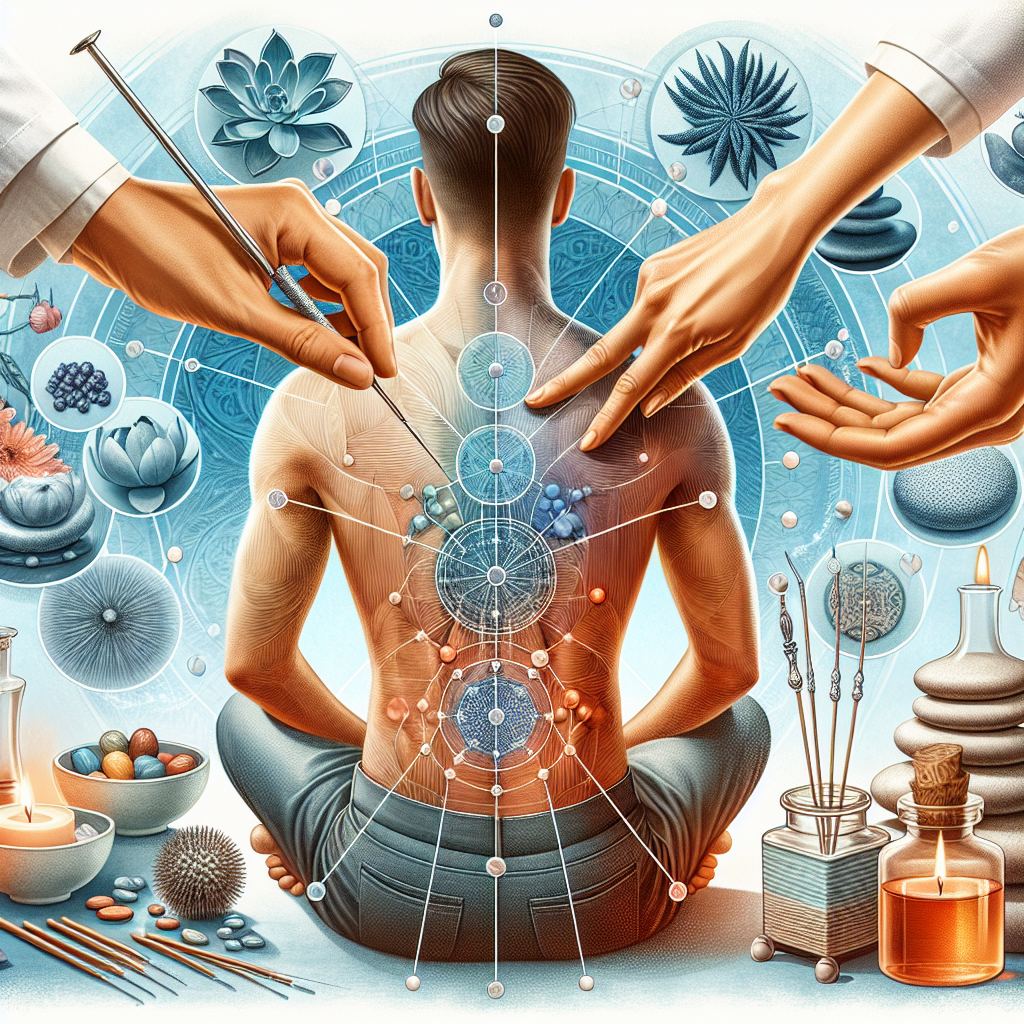You’re about to embark on a journey through the world of holistic healing techniques. This fascinating article will provide you with a comprehensive understanding of these practices that focus on treating the whole person – mind, body, and spirit. From acupuncture to herbal remedies, delve into the diverse range of approaches that aim to promote balance, harmony, and overall well-being. Get ready to explore the power of holistic healing and discover how it can enhance your health and happiness.
Understanding Holistic Healing Techniques
Definition of Holistic Healing
Holistic healing is an approach to wellness that considers the whole person – mind, body, and spirit – in the pursuit of overall well-being. It recognizes the interconnectedness of these aspects and aims to address any imbalances or disharmony that may be present. Unlike traditional medicine, which often focuses solely on treating symptoms, holistic healing takes a more comprehensive approach by seeking to uncover and address the root causes of health issues. It emphasizes self-care, self-awareness, and the integration of various natural therapies and techniques to promote optimal health and vitality.
Principles of Holistic Healing
Holistic healing is guided by several key principles. One fundamental principle is the belief that the body has an innate ability to heal itself. Holistic practitioners recognize the body’s inherent wisdom and work to support and enhance this healing capacity. Another principle is the understanding that each person is unique and that what works for one individual may not work for another. This individualized approach involves considering not only physical symptoms but also the individual’s emotional, mental, and spiritual well-being. Additionally, holistic healing emphasizes the importance of prevention and proactive self-care, rather than solely focusing on reactive measures.

Benefits of Holistic Healing
Holistic healing offers a wide range of benefits that go beyond merely addressing physical symptoms. By considering the whole person, holistic techniques can help improve overall well-being and support long-term health. One notable benefit is the potential for improved physical health. By addressing underlying causes and imbalances, holistic healing techniques can alleviate chronic conditions, reduce pain, and strengthen the body’s natural defenses. Additionally, holistic healing promotes emotional and mental well-being by addressing the root causes of stress, anxiety, and depression. It can also enhance spiritual growth and personal development, leading to a greater sense of purpose and fulfillment in life.
Common Holistic Healing Techniques
Holistic healing encompasses a diverse array of techniques and therapies. Some common techniques include acupuncture, homeopathy, aromatherapy, herbal medicine, and energy healing practices like Reiki. Acupuncture involves the insertion of thin needles into specific points on the body to promote the flow of energy and restore balance. Homeopathy utilizes highly diluted substances to stimulate the body’s inherent healing mechanisms. Aromatherapy employs the use of essential oils to promote relaxation, relieve stress, and support emotional well-being. Herbal medicine harnesses the healing properties of plants to address a wide range of health issues. Energy healing techniques like Reiki involve the manipulation of subtle energy fields to promote physical, mental, and spiritual well-being.

Alternative Medicine vs. Holistic Healing
Although related, alternative medicine and holistic healing are not the same. Alternative medicine refers to non-mainstream approaches to healthcare that are used instead of conventional medical treatments. While alternative medicine may focus solely on physical symptoms, holistic healing takes a more comprehensive approach. It considers the person as a whole, addressing multiple aspects of well-being and seeking to uncover and address the root causes of health issues rather than solely treating symptoms. Holistic healing also emphasizes self-care and proactive wellness practices, whereas alternative medicine may be used reactively when conventional treatments have failed.
Physical Techniques in Holistic Healing
Physical techniques play a vital role in holistic healing. These techniques include bodywork therapies like massage, chiropractic care, and osteopathy. Massage therapy involves manipulating the soft tissues of the body to alleviate tension, improve circulation, and promote relaxation. Chiropractic care focuses on the alignment of the spine, aiming to restore balance and function to the nervous system. Osteopathy takes a whole-body approach, using manual techniques to enhance the body’s self-healing abilities. These physical techniques can address physical pain, improve mobility, and support the overall health of the musculoskeletal system.

Mental and Emotional Techniques in Holistic Healing
Holistic healing recognizes the significant impact that mental and emotional well-being have on overall health. Techniques such as cognitive-behavioral therapy (CBT), mindfulness practices, and stress reduction techniques are commonly used to address mental and emotional imbalances. CBT helps individuals identify and change patterns of negative thinking and behavior that contribute to emotional distress. Mindfulness practices, such as meditation and deep breathing exercises, promote present-moment awareness and relaxation. Stress reduction techniques, such as guided imagery and journaling, can help individuals manage stress and promote emotional well-being.
Spiritual Techniques in Holistic Healing
Spiritual techniques are an integral part of holistic healing, recognizing the importance of connecting with a higher power or purpose. These techniques may include prayer, meditation, yoga, and various forms of energy healing. Prayer is a form of deep communication with a higher power, providing solace, guidance, and a sense of connection. Meditation allows individuals to quiet the mind, cultivate inner peace and clarity, and tap into their spiritual essence. Yoga combines physical postures, breathwork, and meditation to promote physical, mental, and spiritual well-being. Energy healing practices, like Reiki, utilize the flow of universal life force energy to cleanse, balance, and harmonize the spiritual energy system.

Energy-Based Techniques in Holistic Healing
Energy-based techniques hold a prominent place in holistic healing. These techniques recognize the existence of subtle energy fields within and around the body and focus on balancing and harmonizing these energies. Reiki, a popular form of energy healing, involves the gentle laying on of hands or holding them near the body to facilitate the flow of healing energy. Healing touch, qigong, and acupuncture are other examples of energy-based techniques used in holistic healing. By rebalancing the body’s energy fields, these techniques aim to promote physical, mental, and emotional well-being.
Combining Holistic Healing Techniques
One of the strengths of holistic healing is its versatility and the ability to combine different techniques to create an integrated approach. For example, an individual seeking relief from chronic pain might combine acupuncture sessions with massage therapy and herbal supplements. Another person looking to address emotional imbalances may find a combination of cognitive-behavioral therapy, meditation, and energy healing to be beneficial. The key is to tailor the approach to the individual’s unique needs and goals, considering all aspects of their well-being. By integrating multiple holistic healing techniques, individuals can experience a more comprehensive and synergistic approach to wellness.
In conclusion, holistic healing offers a holistic and comprehensive approach to wellness that considers the interconnectedness of the mind, body, and spirit. By addressing the root causes of health issues and promoting self-care, holistic healing techniques can support physical, mental, and emotional well-being. Through a combination of physical, mental, emotional, spiritual, and energy-based techniques, individuals can achieve optimal health and vitality. So, whether you’re experiencing chronic pain, emotional distress, or seeking personal growth, exploring the world of holistic healing techniques may hold the key to unlocking your full potential for wellness.
